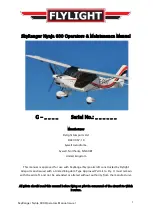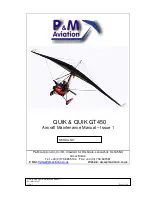
T
T
e
e
c
c
h
h
n
n
i
i
c
c
a
a
l
l
D
D
e
e
s
s
c
c
r
r
i
i
p
p
t
t
i
i
o
o
n
n
,
,
O
O
p
p
e
e
r
r
a
a
t
t
i
i
n
n
g
g
,
,
M
M
a
a
i
i
n
n
t
t
e
e
n
n
a
a
n
n
c
c
e
e
a
a
n
n
d
d
R
R
e
e
p
p
a
a
i
i
r
r
M
M
a
a
n
n
u
u
a
a
l
l
Document No.: 304S/MM
Date of Issue:
08/14
6-15
H
P
H
Ltd.
6.5.5 Tools
In addition to the usual tools of an aircraft shop,
especially recommended for fiberglass work:
•
Clean vessels for resin, hardener, and
mixing
•
Brushes with small bristles; and one
big brush
•
Sharp scissors
•
Sandpaper of various grits
•
Abrasive paper 200, 300, 400, and 600
grits
•
Sharp chisel
•
A keyhole saw, a hacksaw blade with
one end taped to make a handle
•
Files, half-round, coarse
•
Sanding block to hold sandpaper while
using it
•
Good special roughing tool: a piece of
a hacksaw blade, fitted on a handle
from fiberglass, or wood, or metal.
•
Vinyl (PVC) plastic electrical tape,
•
clear cellophane tape, old newspapers,
•
Plastic sheeting, polyethylene
•
Parting
agents
for
epoxies.
In
emergency, try paste wax or clear shoe
polish, also a candle, However, never
use
waxes
containing
silicones
because one can never remove traces
of them from the work, and silicones
will prevent adhesion of resin or
lacquer.
•
Solvents: Acetone or MEK (methyl-ethyl-ketone), lacquer thinners,
petroleum solvents, to clean the tools and remove traces of parting agents.
Don't get them on the canopy!
•
A small hand grinder makes the work easier.
•
A disc sander with a 90o adapter is extremely useful for many works, but
untrained people should use only small ones, - providing the danger of
cutting holes very quickly!
•
Grinding wheel for sharpening tools - fiberglass dulls them faster than wood!
•
Balance or scale which is accurate to about one gram (0,05 ounce) a mail
scale is not close enough in the most cases


































